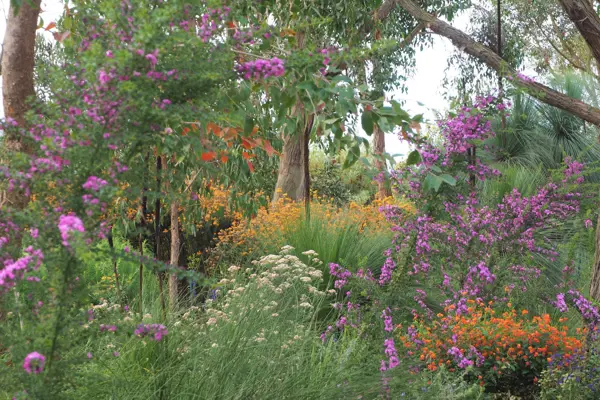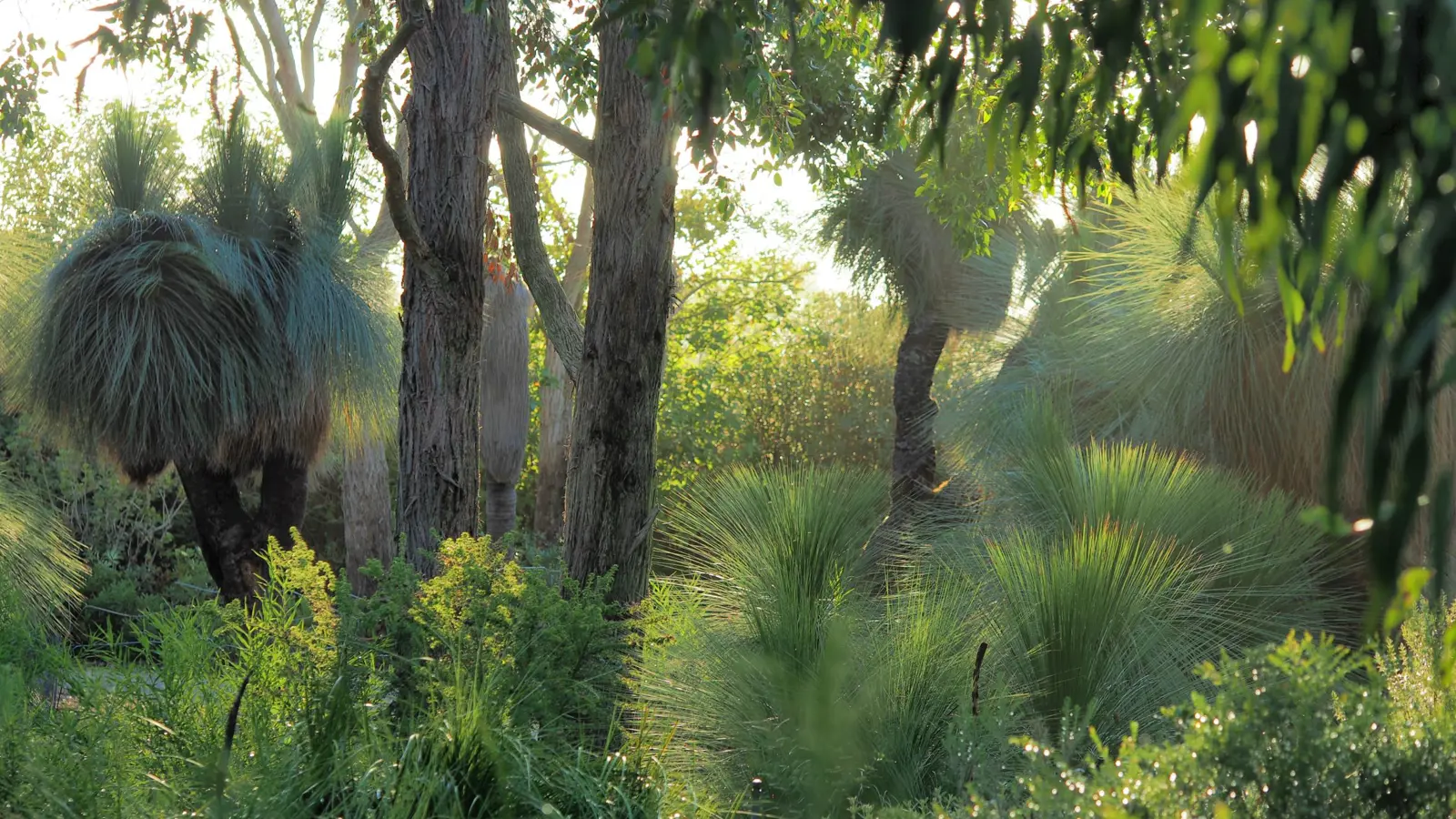
Stringybark Garden
The Stringybark Garden features a collection of plants that are well adapted to withstanding or regenerating after fire. Fire features heavily in our landscape and as a result, over millions of years, large portions of Australia’s flora have evolved certain abilities and strategies to ensure they can successfully regenerate after a bushfire. The collection of Asteraceae, Ericaceae, Fabaceae, Proteaceae and Asphodelaceae species in this garden are perfect examples of the relationship between fire and flora.
On display in the the Stringybark Garden:
- Several species of Grass Trees (Xanthorrhoea species), as well as the Kingia (Kingia australis), which are all well over 100 years old.
- Stringybark eucalypts including Eucalyptus obliqua.
- Collection of species from the plant families Asteraceae and Fabaceae, which are typical ‘pioneer plants’, meaning they colonise sites post-fire.
- Display of heaths (Epacris species) and Banksia which are typically well-represented in sandy heathland - a vegetation type that is very often subjected to fire.

Notes from the Curator
Kaishan Qu
The intent of the Stringybark Garden is to tell the story of Australian plants which can regenerate after fire and recreate the feeling of a sandy heathland. The eucalypts form the base structure of this garden and provide dappled shade throughout. A wide variety of shrubs with different heights were selected to achieve a display of different textures and colours. True to our frequently burned sandy heathlands, the garden comes alive with vibrant colour in the springtime as many of the low-growing shrubs bloom in unison. The garden is bookended by two straight hedge rows, which act to enclose the rest of the garden.







